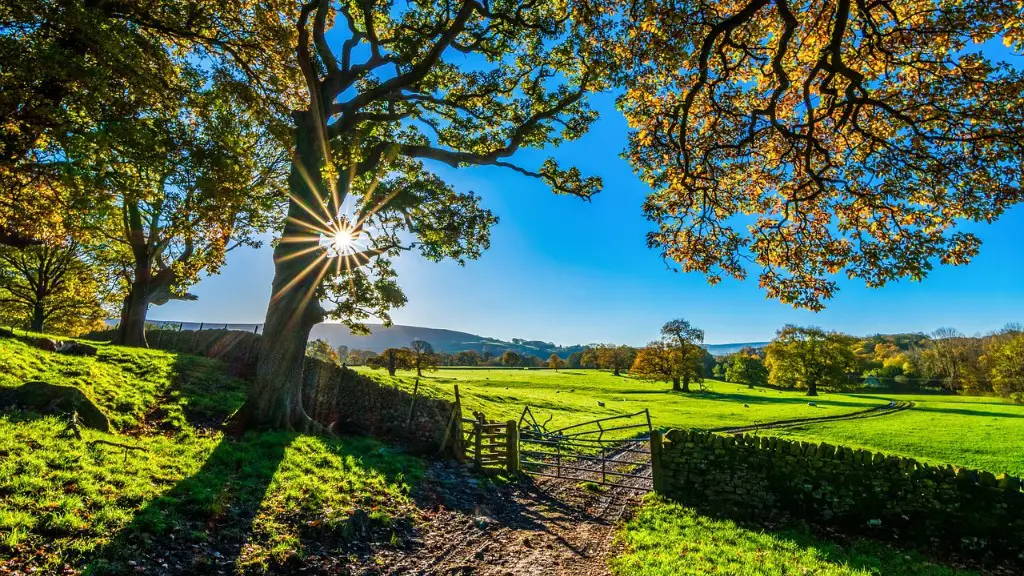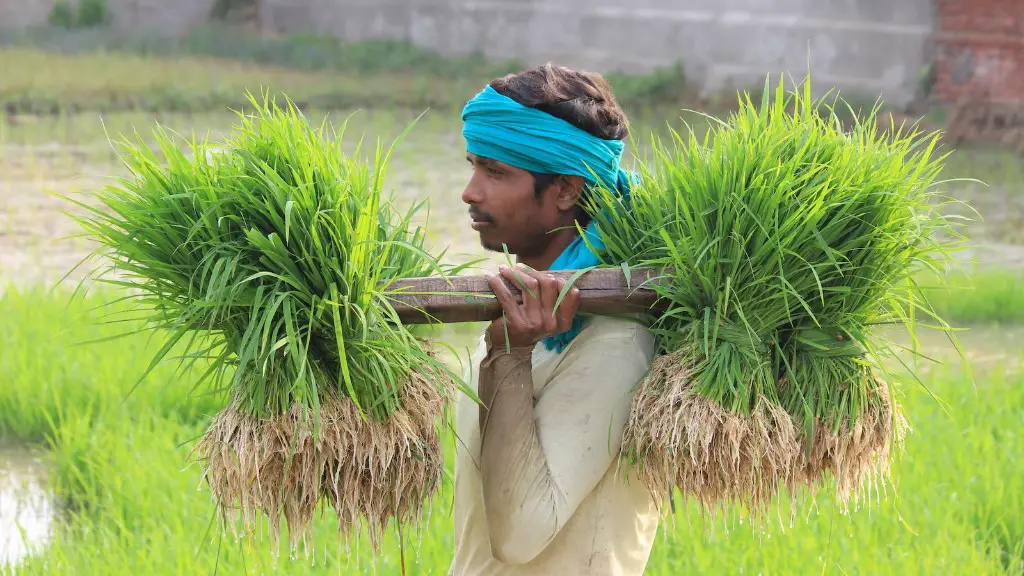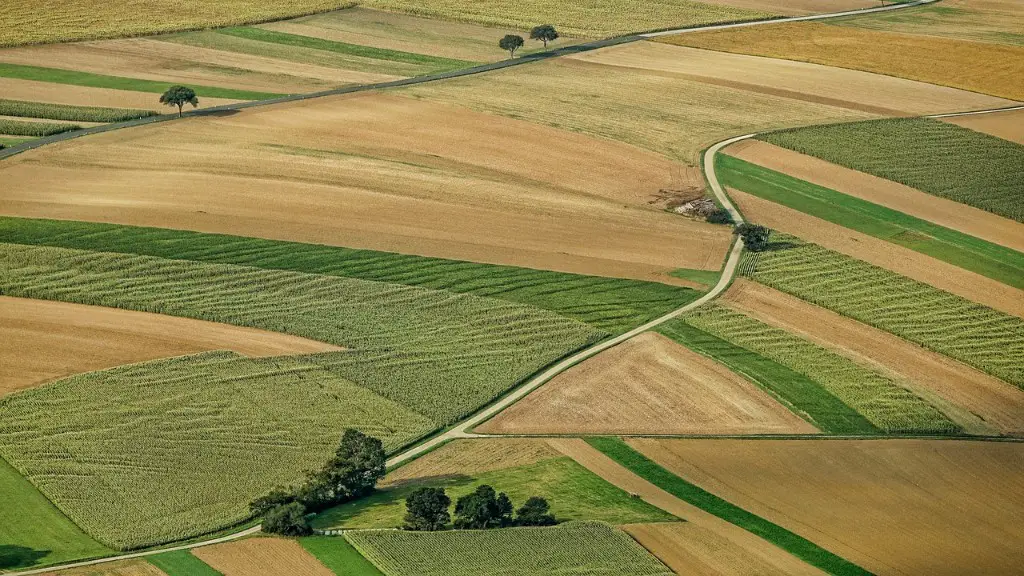The agricultural revolution is thought to have arisen independently in several parts of the world, including the Fertile Crescent in the Middle East, China, and the Americas. The reasons for its development are not fully understood, but various environmental, social, and economic factors are thought to have played a role. The introduction of agriculture allowed for the domestication of plants and animals, which led to the development of civilizations. Agriculture also allowed for the growth of cities and the rise of civilizations.
The first agriculture arose in different places at different times. One of the main reasons why it arose when it did was because of the end of the last Ice Age. The climate became warmer and drier, which made it easier to grow crops and keep livestock.
Farming has been a major driver of human civilization and development. By enabling people to grow all the food they need in one place, it has allowed for much larger populations to develop and thrive. This, in turn, has led to the development of cities and trade.
For decades, scientists have believed that our ancestors took up farming some 12,000 years ago because it was a more efficient way of getting food. However, recent research has suggested that this may not be the case. Instead, it seems that our ancestors began to farm because they had to – they were forced to by changes in the climate. This new research is based on a study of ancient pollen samples, which show that the climate began to change around 12,000 years ago, becoming much drier and colder. This would have made it difficult to find food, and so our ancestors turned to farming as a way to ensure they had enough to eat.
What era did agriculture begin
Agriculture is thought to have begun during the Neolithic Era, before roughly 9000 BCE. This is when polished stone tools were developed and the last ice age ended. Historians have several theories about why many societies switched from hunting and foraging to settled agriculture. One theory is that the population began to outgrow the food supply that hunting and gathering could provide. Another theory is that the climate began to change, making it difficult to find food. Whatever the reason, agriculture allowed for the growth of civilizations and the development of new technologies.
The Fertile Crescent was the birthplace of agriculture and the earliest farmers. The region is home to some of the world’s earliest known civilizations, including the Sumerians, Babylonians, and Assyrians. The Fertile Crescent was also the birthplace of the first writing system, which was used by the Sumerians.
What resulted from the rise of agriculture?
The agricultural revolution was a major turning point in human history. It led to a fundamental change in the way humans lived and interacted with the natural world. The consequences of this revolution were far-reaching and often had negative impacts on human health and wellbeing. One of the most significant consequences was the rise of inequality, as a result of the increased dependence on the land and the fear of scarcity. This led to a decline in nutrition and an increase in infectious diseases, as people were forced to live in close proximity to domesticated animals. The agricultural revolution also had a major impact on the environment, as the clearing of land for farming led to deforestation and soil erosion.
Agriculture is important for a variety of reasons. It is the main source of raw materials for industries, it is important to international trade, it plays a big role in a nation’s revenue, it provides employment, it is crucial to a country’s development, it can help heal the environment, and it goes hand-in-hand with war.
Why did agriculture arise when it did quizlet?
People started to domesticate plants and animals because they learned that it was a more efficient way to gather, process, and store food. The climate also became more favorable for agriculture, which helped to encourage its development.
The history of agriculture is a long and fascinating one. It is the story of humankind’s development and cultivation of processes for producing food, feed, fiber, fuel, and other goods by the systematic raising of plants and animals. Prior to the development of plant cultivation, human beings were hunters and gatherers. They relied on the bounty of the land to sustain them. The development of agriculture allowed for the domestication of plants and animals, which led to the development of civilizations. Agriculture has played a pivotal role in the history of the world, and it continues to do so today.
Who started the history of agriculture
There are three main theories on the origins of agriculture: 1) it started independently in different parts of the world; 2) it was a diffusion of ideas and plants from one region to another; or 3) it developed from a combination of both.
The first theory, that agriculture started independently in different parts of the world, is supported by the fact that there are distinct clusters of plants that were domesticated in different regions. For example, Mesoamerica is home to corn, beans, squash, papaya, tomatoes, chili, and peppers, while the Fertile Crescent is known for wheat, barley, peas, lentils, chickpeas, and flax. This suggests that people in different parts of the world were domesticating plants that were well-suited to their local climate and soil.
The second theory, that agriculture was a diffusion of ideas and plants from one region to another, is supported by the fact that there are many similarities between the plants that were domesticated in different parts of the world. For example, wheat, barley, and peas are all grains, and they were all domesticated in the Fertile Crescent. This suggests that people in different parts of the world were exposed to the same plants and
The two major changes that occurred in agriculture around 600 BC were an increase in the use of iron ploughshare, and the introduction of crop rotation. With the use of iron ploughshare, heavy clay soil could be turned over more easily, allowing for better agricultural production. In addition, the introduction of crop rotation meant that farmers could grow a variety of crops, which led to a flourishing of agriculture in the Mahajanapadas.
How did agriculture begin in America?
Agricultural development in the Americas is a fascinating example of human ingenuity and adaptability. Around 10,000 years ago, people in North and South America began domesticating plants and animals, developing new technologies and adaptions that allowed them to thrive in the Americas. This early development of agriculture allowed the Americas to be inhabited by a variety of cultures and civilizations, each with their own unique history and customs.
Farming began c 10,000 BC on land that became known as the FERTILE CRESCENT. Hunter-gatherers, who had traveled to the area in search of food, began to harvest (gather) wild grains they found growing there. They scattered spare grains on the ground to grow more food.
What are the main causes of agriculture
Agricultural pollution is caused by a variety of factors, including the use of pesticides and fertilizers, contaminated water, soil erosion and sedimentation, livestock pests and weeds, and heavy metals. Soil erosion and sedimentation are the leading causes of agricultural pollution, followed by contaminated water, livestock pests and weeds, and heavy metals.
The Agricultural Revolution was a time of great change for farmers and agriculture as a whole. There were many contributing factors to this Revolution, which ultimately led to increased food production and better yields. One of the main contributing factors was the availability of more farmland. With the population continuing to grow, there was a need for more food, which could only be produced with more land. Additionally, the climate was also very favorable during this time, with little to no extreme weather conditions. This allowed crops to grow more easily and increased the chances of a successful harvest. Another contributing factor was the increased number of livestock. This allowed farmers to not only have a source of food, but also fertilizer for their crops. Lastly, improved crop yield played a significant role in the Agricultural Revolution. Newer, more efficient methods of farming and new types of crops allowed farmers to produce more food in a shorter amount of time. Overall, the Agricultural Revolution was a time of great change and progress for agriculture. The contributing factors mentioned above were essential in making this possible.
How did agriculture impact us?
Agriculture, food, and related industries are a vital part of the US economy, contributing roughly $1264 trillion to gross domestic product (GDP) in 2021. This sector accounts for 54 percent of the US economy, with the output of America’s farms contributing $1647 billion, or about 7 percent of GDP. The agricultural sector is important for both its economic contributions and for its impact on consumers and other industries.
Agriculture has played a pivotal role in the development of human civilization. Out of agriculture, cities and civilizations grew, and because crops and animals could now be farmed to meet demand, the global population rocketed—from some five million people 10,000 years ago, to more than seven billion today.
Agriculture allowed for the domestication of plants and animals, which led to the development of civilizations. Agriculture allowed for the growth of cities and the rise of civilizations. Today, the global population is more than seven billion people, thanks in part to agriculture.
Warp Up
There are several reasons for the origins of agriculture. One reason is that the world’s population was growing and there was not enough food to support everyone. Agriculture allowed for the cultivation of plants and the raising of animals, which provided a steadier food supply. Another reason is that the climate was changing. The ice age was ending and the world was becoming warmer and drier. This made it difficult to find food, as many plant and animal species were dying out. Agriculture provided a way to grow food in a controlled environment.
The rise of agriculture can be attributed to a number of factors, including the availability of land and water, the development of tools and technology, and the ability to domesticated plants and animals. Agriculture allowed for the growth of civilizations and the development of cities and states. It also allowed for the growth of trade and commerce, and the rise of empires.





